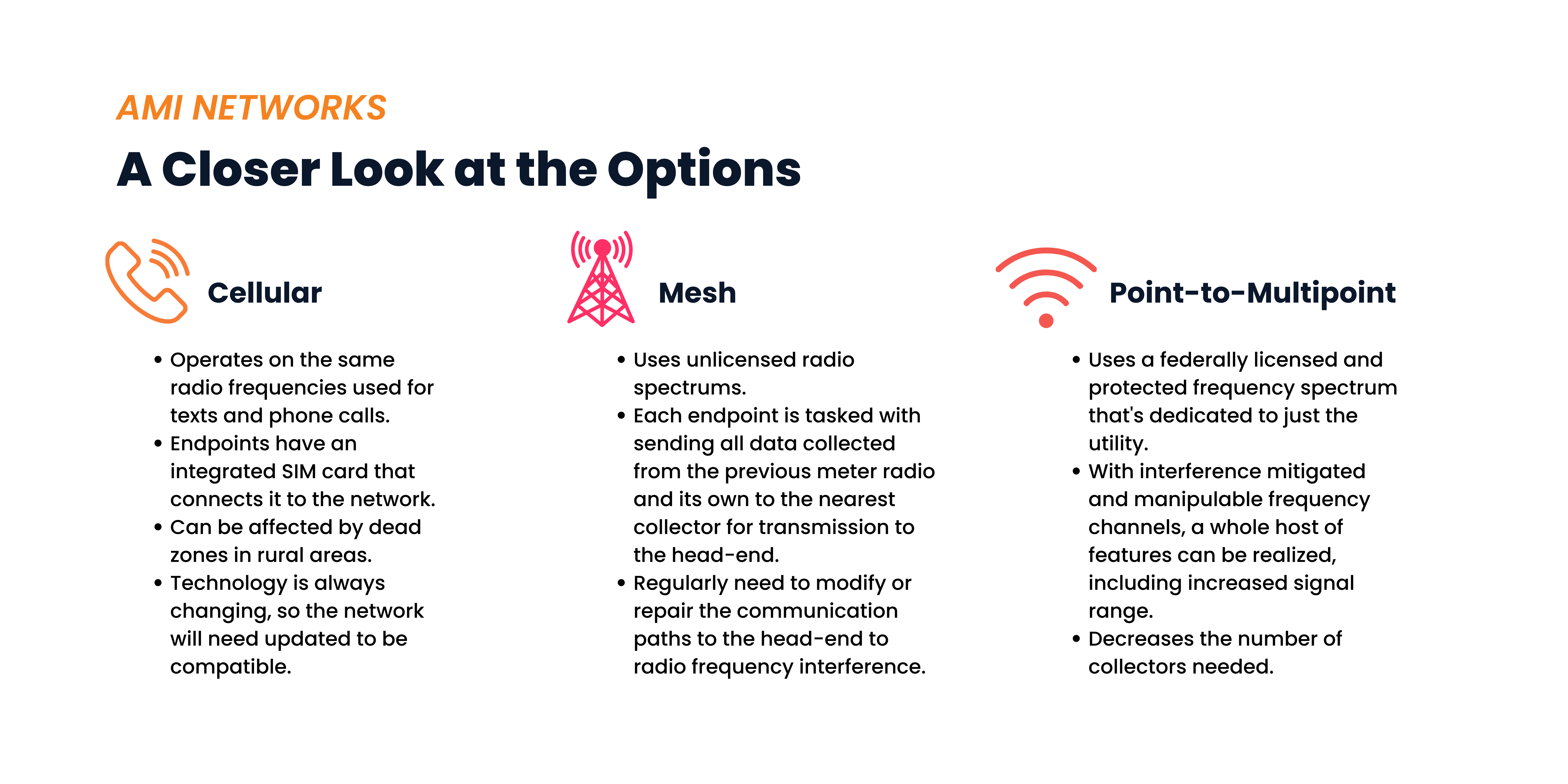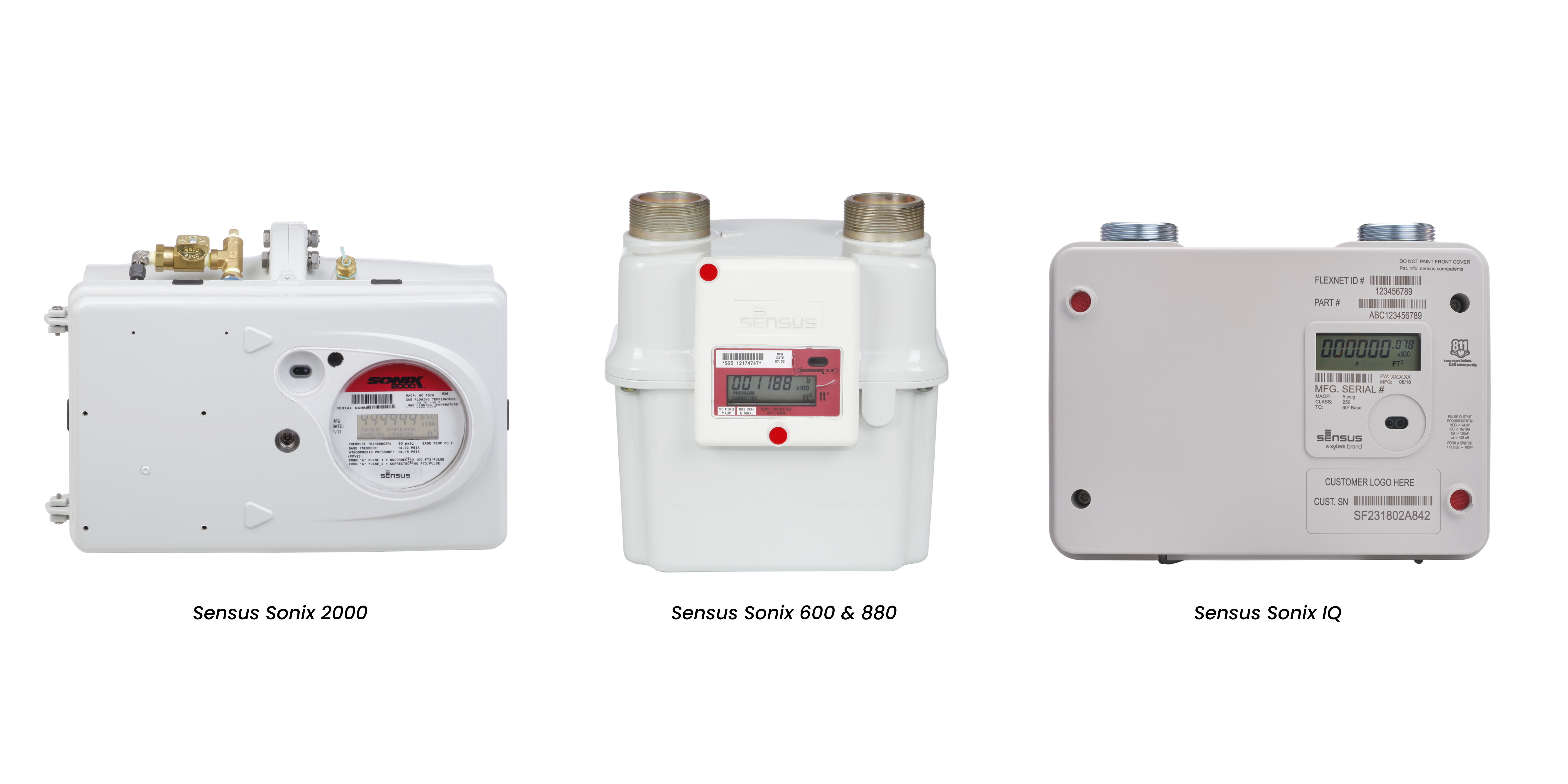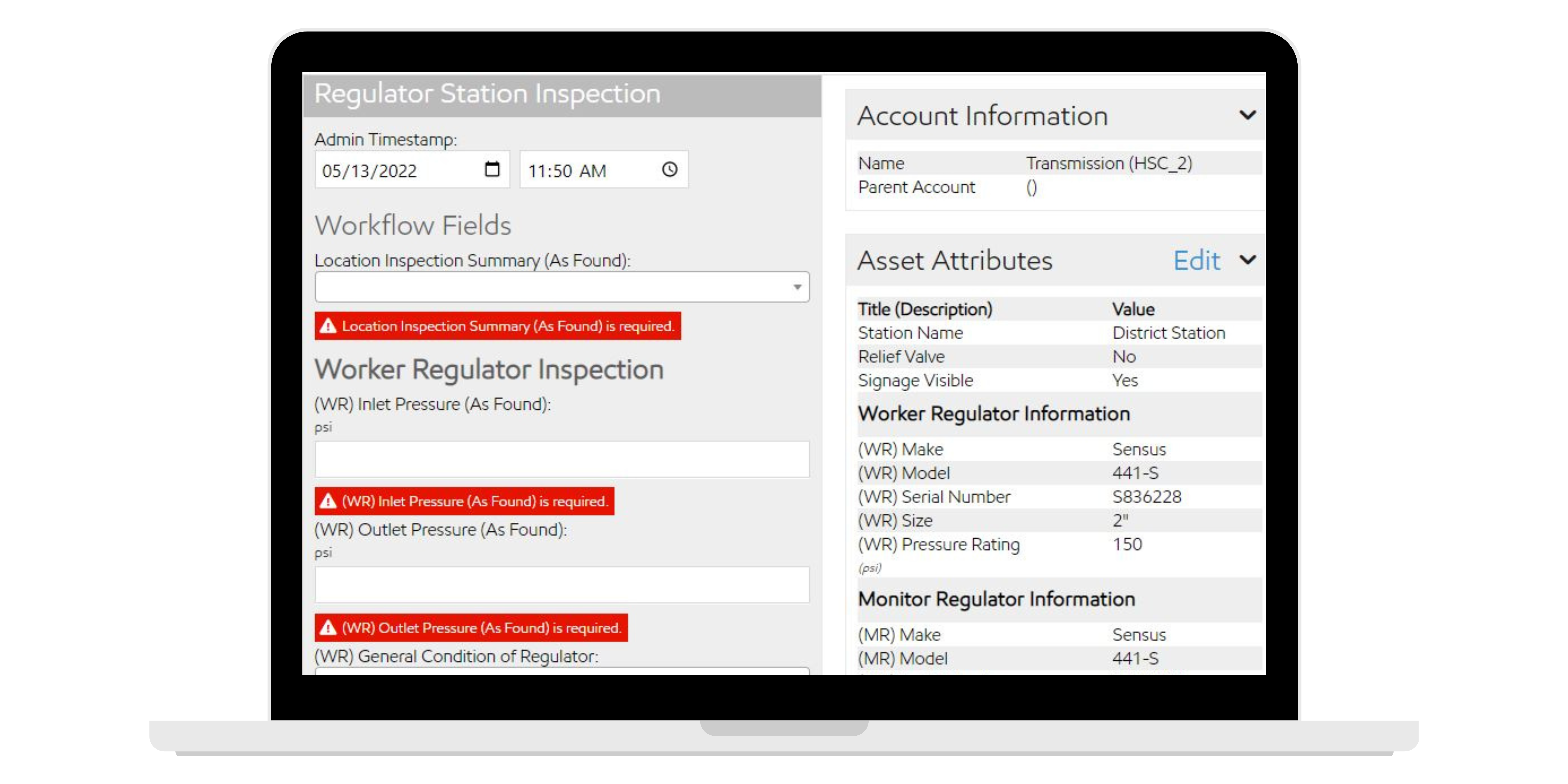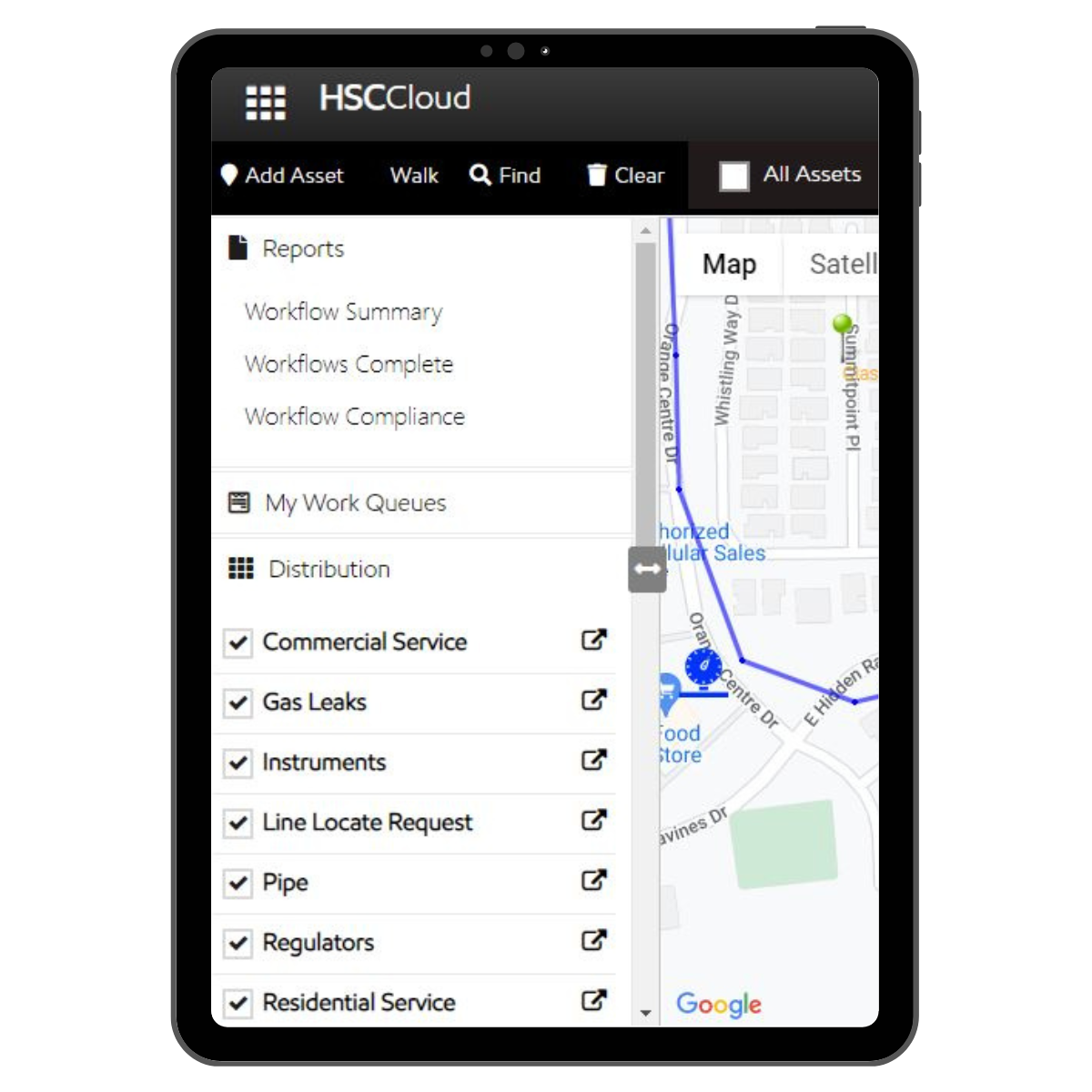
Written by Katie Flowers
The natural gas industry has traditionally been slow to adapt to change and instituting new processes. Those that work with natural gas have become accustomed to the way their companies have been operating, often for decades. Routines can be hard to modify, especially when they work. Changes that modernize utility infrastructure may seem like a large undertaking, but it doesn’t need to be so complicated. Over the past several years, there have been significant improvements to the processes that help natural gas systems function.
When it comes to these new technologies, they can come in different forms. First, there are hardware-based options. An Advanced Metering Infrastructure solution uses a combination of components to better connect utilities to their equipment in the field. It simplifies several processes that technicians traditionally undertake manually by enabling remote monitoring and control capabilities. And if the meters in the system aren’t up to par, utilities can swap them out with ultrasonic meters. There have been significant advancements in the development of these meters so that there are now options for a variety of residential, commercial, and industrial applications. There is also software that is changing the game in the natural gas industry. Taking things digital may sound intimidating, but it doesn’t need to be! Geographic information systems have been growing in popularity in recent years. With these systems, utilities can expertly map out the areas within their coverage in a variety of ways. These systems traditionally help utility and pipeline operators improve their asset management, promote compliance, and access more data. And if the conventional manual and paper processes are slowing technicians down or leading to inefficiencies, maybe it’s time to enact some changes. To achieve that, there’s HSC Cloud, our bespoke operations and compliance software specifically designed with gas utilities in mind. Turning inspection forms digital with this platform streamlines procedures and guarantees that accurate and complete information is gathered.
In this white paper, we’ll explore these four exciting pieces of technology: AMI networks, ultrasonic meters, GIS, and HSC Cloud. As we discuss each option, we’ll lay out how they can be applied, their respective benefits, and how in some cases they can even be used together.
AMI Solution
While changes certainly don’t happen overnight, newer technologies have been making a sizeable impact on the gas industry. Some of these new solutions allow utilities to reduce their manual workload while gaining better insight into their distribution system as a whole. In turn, better insight gives operators a chance to make smarter decisions to optimize their routine processes. One option that enables elevated insight is Advanced Metering Infrastructure (AMI).
An AMI solution is an integrated system of smart meters, smart sensors, communications networks, and data management systems that enables two-way communication between a utility and their deployed assets. It transmits collected data over-the-air (OTA) from field radios to collector antennas on a specific radio frequency. Instead of performing tasks like meter readings manually, an AMI solution provides the opportunity to execute this function remotely. Advanced radio frequency technology has enabled service providers to completely automate the meter reading and data entry processes. More accurate meter consumption data and consistent billing timelines lead to happier results and decreased disputes for both the utility and its customers.
There are three AMI network options: cellular, mesh, and point-to-multipoint. A cellular network operates on the same frequencies that the public uses to send text messages, make phone calls, or use the internet. Because this option operates without the need for utility-owned collectors, it reduces operating costs and is easier to stand up since they use existing infrastructure. But as one can imagine, these networks see a lot of traffic. It’s also not a viable option for many rural areas where cell service is spotty. Mesh networks use unlicensed radio frequency (RF) spectrums on the industrial, scientific, and medical band (ISM) as their communications channel. These RFs can also be used by the general public for things like baby monitors, appliances, garage door openers, and Wi-Fi modems. Each radio endpoint in a mesh network operates as a sender and receiver of data from neighboring devices. The devices in this network type need to be within range of one another to be able to transmit the data that’s been gathered up the chain to the collector, or head end. And because the mesh network RF is also used by the public, utilities can face competition and increased risk of interference when they need to send important data from meter reads or sensor alarms. Utilities that are on a point-to-multipoint system use a federally licensed and protected radio frequency spectrum. This type of frequency is exclusive to the utility, and no one else is allowed to use it. With no competition or interference in transmitting data, utilities can experience better functionality, including an increased signal range. Licensed frequencies also enable deployed radio assets to transmit at double the output power when compared to those installed in an unlicensed frequency network. This allows them to communicate further distances and requires fewer costly data collectors, reducing maintenance operations over the lifetime of the system. And because of the lack of competition on radio frequencies used by the point-to-multipoint AMI solutions, alarms in the system can be given top priority so that the utility can be notified of potentially dangerous situations in a timely manner. This information just begins to scratch the surface of the different types of AMI solutions. To find more information about the three AMI network options, visit our previous white paper on the topic here.

An AMI solution’s benefits go beyond simplifying meter reading and billing operations. With this solution, utilities can fulfill other tasks remotely and enhance the safety of their system as a whole. As an example, let’s look at Sensus FlexNet. FlexNet is the only point-to-multipoint system with its own FCC licensed utility-grade network in North America, and it can easily be scaled to fit the needs of an individual utility. It can keep an eye on pressure levels throughout the natural gas distribution system and if a concerning change in pressure were to occur, an alert can quickly be sent out to those in the office in near real time. This has the potential to mitigate an over-pressure event by alerting an operator before there's even a chance for damage to occur. Lastly, cathodic protection equipment plays a critical role in preventing corrosion of steel assets and it no longer needs to be an annual guessing game of whether the assets are sound. With FlexNet, utilities can monitor cathodic protection assets remotely at any time thanks to the two-way communication with rectifiers and cathodic protection test points. With the combination of rectifier monitors and controllers, along with cathodic protection test points, even instant-off tests can be performed in a matter of seconds, rather than hours. For additional insight on remote cathodic protection monitoring, please see our previous white paper on this topic here.
Ultrasonic Meters
Meters play a significant role in a utility’s infrastructure and are largely responsible for generating revenue. It’s important to get natural gas consumption measurements correct since customers depend on their utility to provide accurate billing each month. That’s why it’s necessary to have meters that can be trusted to provide reliable consumption data during their service. Rotary and diaphragm models have been staples in the natural gas industry for decades and have been the go-to options for a variety of applications. While these are still suitable models, manufacturers have been making significant strides in metering technology in recent years, including the further development of ultrasonic meters. Such progress has led to the availability of models for residential, commercial, and industrial applications. Ultrasonic meters (USMs) have a solid-state design, which means there are no moving parts that can wear out over time. The lack of moving parts reduces or even eliminates the need for costly repairs and regular maintenance, which then leads to fewer truck rolls and reduced labor costs. Most models also have battery lives that last between 10-20 years and carry longer warranty periods than their diaphragm or rotary counterparts, as is the case with Sensus ultrasonic meters. These design features provide utilities with decades of confidence in the meter’s performance and help make budgetary planning costs for maintenance and infrastructure updates an easier undertaking.

While compact in size, these meters are packed with plenty of unique features. Many of these attributes vastly improve safety at the meter set. One such feature seen in some models is an integrated shut-off valve. In the case of the Sensus Sonix IQ, the valve works with the integrated pressure sensor to identify potentially dangerous pressure spikes, the flow sensor to monitor for broken pipes, and the temperature sensor for fire risks. If one of the onboard sensors flags a discrepancy, the valve will shut off the flow of gas to potentially prevent further damage before a technician can be deployed to investigate. The safety features continue with the programmable, integrated alarms seen in many models. Alarm options include, but are not limited to, reverse flow, air detection, tampering attempts, pressure changes, and onboard hardware issues. These alarms help alert utilities to issues affecting the meter’s health and the operator specific alarm threshold parameters for temperature, pressure, and flow rate can be programmed into the meter itself. In the Sensus ultrasonic models, extended 60-90 day hourly data logs also provide better insight into the meter’s performance and provide actionable data to determine what has taken place at the meter set. This gives operators a chance to take immediate action if issues are found in the data and ensure optimal performance and measurement accuracy.
When these meters are used in conjunction with an AMI network, utilities can have greater access and insight into their network. These networks allow gas utilities to more effectively collect meter consumption and sensor data by wirelessly transmitting readings directly to the head end software back at the office through two-way communication. As an example of how USMs are incorporated into an AMI network, the Sensus Sonix IQ includes an option to be deployed with an integrated FlexNet radio. Additionally, an AMI network can enhance the meter’s built-in safety features. If one of the alarms is triggered, an AMI network can allow an operator to step in and perform an on-demand remote disconnect of service. And if it turns out that there is widespread emergency in the distribution system, a mass disconnect can be triggered remotely with the AMI network, which allows the utility to react quickly to prevent an escalated situation before the scene can be assessed. For more information on the current state of residential ultrasonic measurement for natural gas utilities, please see our previous white paper on the topic here.
GIS
While it’s impossible to be everywhere at once, it’s important to know what’s going on in all parts of the system to make sure it’s running smoothly. The good news is that software development in the industry has produced results that allow utilities to modernize their processes and system monitoring. One such example is a geographic information system. According to the National Geographic Society, a geographic information system (GIS) “is a computer system for capturing, storing, checking, and displaying data related to positions on Earth’s surface.” It allows users to have better insight into the data, which they can analyze, manage, and map in all kinds of ways. In many cases, a GIS can be tailored and scaled to match a utility’s needs and the kind of information they’d like to gather.
The core mission of these systems is to provide a more holistic view of the areas in which a utility operates. One of the biggest advantages seen in most versions is the improvements made to asset management, which are achieved with its mapping abilities. Utilities can use their GIS to map out their infrastructure (valves, meters, regulator stations, pipe, gathering/production assets, and more) and document information on these assets, such as manufacturer, model number, install date, ANSI rating, and MAOP. For utilities that use a GIS, the system is the authoritative data source for the location of their assets. The data collected from the utility’s system makes assets easily trackable, and having a clear view allows the utility to better forecast for when repairs or replacements are needed. Combining the data, mapping, and location analytics also helps utilities take stock of potential risks and hazards. Knowing what types of assets are there and where they are located gives utilities the chance to respond appropriately and ensure a safe gas connection. Having better access and understanding of the data also allows utilities to make smarter decisions on how to run their systems and demonstrate where improvements can be made. The data that’s collected with a GIS can be used to make connections and link any patterns that may occur. When patterns are discovered, utilities can use this information to optimize routes and workloads for technicians, as well as to make improvements where the system isn’t functioning as it should.
The benefits of a GIS extend beyond the improvements to asset management. The software can perform spatial analysis, which can be used to identify the location of customers and assets when assessing new project construction. Its real-time location information can be a vital resource for a quick response in an emergency like a gas leak or break in the pipeline. The day-to-day operations work can be a simpler process with a GIS. The mapped-out data and assets optimize workflows by providing a clear view of what work needs to be done. Before technicians even head out into the field, their daily routes can be planned efficiently to take care of inspections, maintenance work, and repairs. When workdays are better planned, the utility experiences reduced idle time and labor costs. Analyzing historical data also makes it easier to forecast upcoming maintenance and other work orders by identifying any trends.
The digital capabilities provided by a GIS can make routine processes simpler, increase efficiencies, and make operations more cohesive. Having access to data, maps, and other materials in one application makes it easy for utility employees to access the real-time information they need when performing work in the field. It also minimizes manual data uploads and analysis, saving the utility time and extra labor costs. Refining workflows in this way improves the way vital tasks are performed, whether it’s pipeline management, asset management, maintenance forecasting, exploration survey, and more.
HSC Cloud
Another digital tool on the market is HSC Cloud, our innovative digital operations and management software built specifically for natural gas utilities. HSC Cloud can be used in a variety of applications, including regulator station inspections, leak surveys, meter surveys, valve inspections, annual cathodic protection surveys, and more. Its mission is to make these manual tasks a simpler, digital process. For inspections, the software allows utilities to build out the paper inspection forms they have traditionally used in a new digital format. These digital forms are essentially replicas of the paper versions that technicians are already using to, which minimizes disruption while seamlessly capturing the information that needs to be collected. This in turn works to reduce data input errors and redundancies. And instead of being bogged down with stacks of paper forms while they’re out in the field, technicians can quickly access what they need in a few clicks on a handheld device, such as a tablet or smart phone. Currently, HSC Cloud also can give utilities the ability to document the maps, location, and schematics related to underground piping, regulators, valves, and control lines; regulator set points, design capacity, and valve-failure mode (open/closed); the system’s overpressure protection configuration; and any other records deemed critical by the utility.
Staying compliant and reporting to regulators are top priorities for utilities, and HSC Cloud makes it simple to address them. In a notice of proposed rulemaking (NPRM) related to the PIPES Act of 2020, PHMSA has laid out a rulemaking plan that will require traceable, reliable, and complete records for gas distribution facilities. Traceable records can be clearly linked to original information about the pipeline segment or facility. Verifiable records are those in which information is confirmed by other complementary but separate documentation. Complete records are finalized by evidence such as a signature, date, or other appropriate markings (e.g. corporate stamp or seal). HSC Cloud can document the maps, location, and schematics related to underground piping, regulators, valves, and control lines; regulator set points, design capacity, and valve-failure mode (open/closed); the system’s overpressure protection configuration; and any other records deemed critical by the utility. Survey and inspection forms can be attached to individual assets, which provides a digital paper trail of what work has been performed and when the equipment has last been inspected. These records are accessible to anyone performing or supervising design, construction, and maintenance activities on the system. This ensures that assets are receiving the required inspections when they are supposed to, provides an easy way to retrieve records when they need to be forwarded to regulating bodies, and maintains traceable, reliable, and complete records.

Utility technicians can save more time and effort throughout their busy workdays with HSC Cloud’s pre-packaged compliance report automation. This functionality allows technicians to automatically generate compliance and operational reports from the data they collect on their inspection routes. They can filter through equipment and work forms to analyze the data needed. HSC Cloud also has Excel and Google Sheets integrations for easier reporting. Once reports are completed, they can then be emailed to management within the utility or forwarded to the state’s public utility commission.
 The decision to make technological upgrades to natural gas infrastructure is a big decision. Naturally, management wants to know if the new technology will be worthwhile. But making a new investment is a smart choice when it can be used with other products. HSC Cloud can map out critical infrastructure or integrate with a GIS to digitize work forms and schedule work on one unified system. This will provide immediate access to real-time asset, operational, and compliance data, which would allow a utility to streamline and automate reporting and audits. Having one unified system for all inspections, maintenance, mapping, and compliance reporting will save the utility valuable time and money. It can ensure compliance data is organized, accessible, and help drive decisions to optimize the safety and efficiency for the customers and business operation. HSC Cloud and a GIS can also be integrated with a customer service and billing system for a more complete and accurate solution. HSC Cloud can work in tandem with an existing GIS for even better insight into the network. It can be connected directly to Esri ArcGIS via a secure configuration, where it will then be able to digitally send data or perform updates automatically from Esri ArcGIS into HSC Cloud. With flexible configuration options, utilities can choose which data sets to synchronize and at what frequency, eliminating the need to manually update HSC Cloud when changes are made to their Esri ArcGIS assets.
The decision to make technological upgrades to natural gas infrastructure is a big decision. Naturally, management wants to know if the new technology will be worthwhile. But making a new investment is a smart choice when it can be used with other products. HSC Cloud can map out critical infrastructure or integrate with a GIS to digitize work forms and schedule work on one unified system. This will provide immediate access to real-time asset, operational, and compliance data, which would allow a utility to streamline and automate reporting and audits. Having one unified system for all inspections, maintenance, mapping, and compliance reporting will save the utility valuable time and money. It can ensure compliance data is organized, accessible, and help drive decisions to optimize the safety and efficiency for the customers and business operation. HSC Cloud and a GIS can also be integrated with a customer service and billing system for a more complete and accurate solution. HSC Cloud can work in tandem with an existing GIS for even better insight into the network. It can be connected directly to Esri ArcGIS via a secure configuration, where it will then be able to digitally send data or perform updates automatically from Esri ArcGIS into HSC Cloud. With flexible configuration options, utilities can choose which data sets to synchronize and at what frequency, eliminating the need to manually update HSC Cloud when changes are made to their Esri ArcGIS assets.
To learn more about the benefits of digitizing work procedures with HSC Cloud, read our previous white paper here.
Conclusion
One issue that comes to mind with the adaptation of new technology is the hesitancy around the associated costs and effort involved in implementing the technology. Despite the upfront costs, it’s often a worthwhile investment in the end. The new technology mentioned in this paper leads to savings from the efficiencies they create, as well as reduced maintenance and labor costs, lower operating expenses, and deeper understanding of the health of the system. Customers of Holland Supply can count on heavy involvement from our team to provide the necessary support to implement these technologies. While some companies want to simply sell software, Holland Supply wants to be a partner in improving the utility.
It can’t be denied that the natural gas industry is facing an exciting era thanks to technological upgrades. No matter which area a utility is looking to improve in or update, there’s an option to suit their needs. AMI networks, ultrasonic meters, GIS, and HSC Cloud work with many of the pieces of equipment and functions already present in a gas system to maximize their performance. Whether replacing aging infrastructure with a modernized counterpart or using software to strengthen asset management and digitize inspection forms, there are several opportunities to move the utility forward. Best of all, many of the options discussed here can be used together. The bottom line, upgrading utility infrastructure with technology doesn’t need to be a daunting or difficult process.